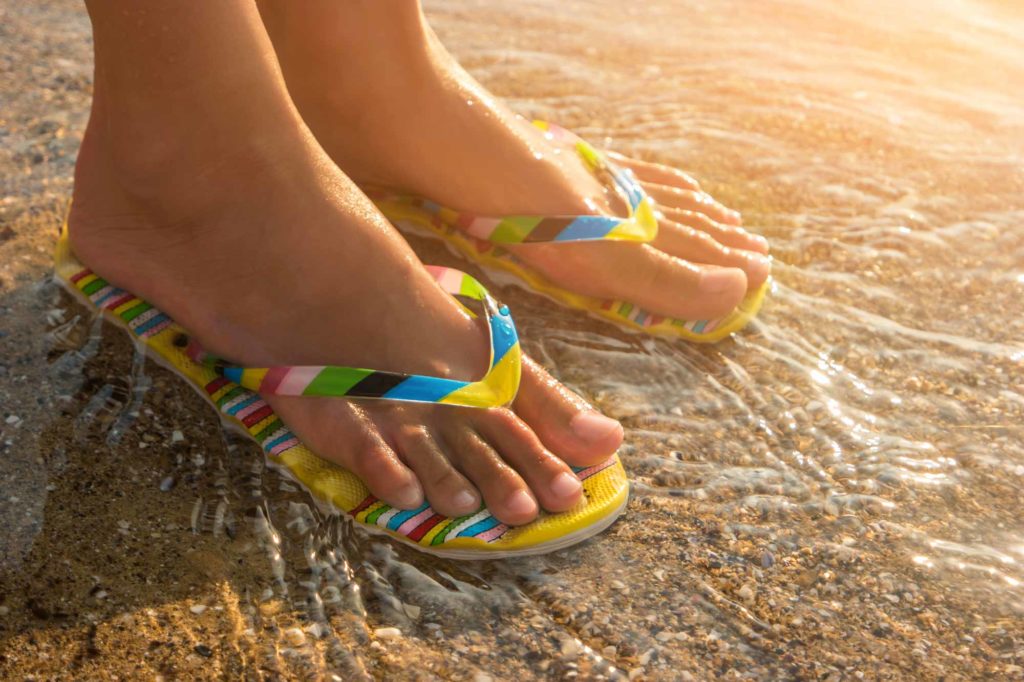
Are you experiencing a flare-up in foot pain? The source of your pain may be your choice of footwear. Flip-flops may be your go-to footwear over the summer, but they may also be causing your plantar fascia pain. Dr. Budler treats patients with plantar fasciitis pain caused by wearing flip-flops using the Tenex TX1 ultrasonic knife.
Why Flip-Flops Fail Feet
Flip-flops fail your feet simply because they are flat (can you say that three times fast?). The flatness of flip-flops means your arches don’t get the support they need when you walk or stand. This lack of support leads to the inflammation and damage of the fascia band. The fascia band is the thick tendon that spans the bottom of your foot from your heel to the ball of your toes. It plays an important role when walking by absorbing the shock created when you take a step. When this band becomes worn and inflamed, it starts to hurt when you walk, run or stand up after sitting or sleeping.
Not only does the prolonged wearing of flip-flops cause pain and inflammation, but if you continue to wear flip-flops, your arch will also eventually flatten out. This creates a domino effect of pain rippling through your knees, hips and even your back. Over time, your fascia band will develop tears and you run the risk of a complete (and very painful) rupture.
Giving Up Flip-Flops
To prevent future pain and any more damage to your feet, it is in your best interest to trade in your flip-flops for some shoes with support. There are some flip-flops out there that do have support, but they still strain your feet in other ways. When you walk in flip-flops, you put pressure on your toes to keep your flip-flip on, which leads to more strain. Flip-flops can also cause the development of painful bunions and hammer toes, which may require surgery.
If you absolutely must trek on with flip-flops, do it sparingly. Also, select a pair that does have support versus a completely flat pair. And look for flip-flops with a thick sole that doesn’t bend in the middle if you fold it. The only place that a flip-flop should bend is at the ball of the foot to accommodate your step. Also look for flip-flops that have additional straps to hold them more securely to your feet.
Treating Foot Pain From Plantar Fasciitis
Plantar fascia pain is usually treated at first with pain relievers and NSAIDs to reduce pain and inflammation. Some patients report improvements after long periods of rest, but symptoms may return after resuming activity or if you revert to wearing shoes with inadequate support. Plantar fascia inflammation can be so severe that walking becomes extremely painful and patients require surgery. This is where the Tenex TX1 treatment can help. Unlike traditional surgery, Tenex TX1 can destroy damaged tissue without impacting the healthy tissue around it by using ultrasound. Patients are left with a faster recovery and permanent pain relief.
If you’re experiencing plantar fasciitis pain and want permanent relief, call Dr. Budler today at 855-201-1519.
